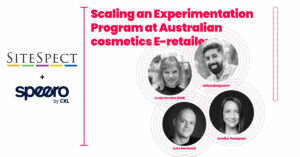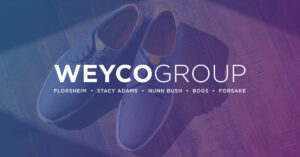What Omnichannel Personalization Means in 2021
By Luke Hardwick
February 10, 2021
Share
A year into the Covid-19 pandemic, pretty much every brand that can has moved online. And we’re not just talking about retailers and restaurants. Telehealth has taken off, as have services like virtual facials, fitness programs, and classes from cooking lessons to professional development programs — not to mention school moving either fully online or to a hybrid model. But this is now old news. Still, many businesses are struggling to think digital first, rather thinking of the digital realm as a stop gap. The brands who have succeeded in bringing their experience online have embraced two principals: personalization and omnichannel experiences.
The Barriers to Personalization Aren’t What You Think They Are
Personalization doesn’t have to be an intrusive or overwhelming proposition. But it makes a big impact. According to Forbes, customers spend 48% more money when their experience is personalized, and most customers are happy to share personal information if they understand what it’s for and it benefits their experience. The same idea should apply to sites outside of the retail sphere as well. Part of succeeding at personalization is having the right tool — you want a platform that not only allows you to apply personalized experiences but also to A/B test them, so you know and can quantify their impact. The other part of personalization is understanding where you can make the biggest impact with the least effort.
If you have an established optimization program, you can delve into 1:1 personalization where you provide a unique experience for every customer based on their history. If you’re newer to the digital game this year, start smaller:
- Tailor your homepage or landing pages to the referral link. You’ll find your advertising dollars go a lot farther if your site experience directly reflects the link a user clicked.
- Consider modifying the site for users arriving from communications such as email newsletters. Perhaps applying reminders or even applying promotions for users arriving to the site from an email offer.
- Highlight inventory, offers, or content based on region. Reflect the needs of the community and surface the right content to the right user at the right time.
- Offer product recommendations. This can mimic the experience of working with a sales representative or a concierge.
- Introduce a logged-in option for users to voluntarily provide personal information for the purpose of improving their experience.
A lot of these steps can be accomplished even without a sophisticated optimization tool. You can create a few distinct landing pages to match your social posts or ads, or you can redesign your homepage so users can self-select a journey that fits their needs. Of course, when you can start to experiment and gather more data you’ll be able to fine tune your customer experience. But, this doesn’t need to be a barrier to get started. Anyone can up the personalization game on their site.
Omnichannel is more accessible than you might think
When we talk about omnichannel experiences, we’re talking about providing a consistent experience across devices. For example, if you have a telehealth appointment, you may call the office to make your appointment, receive a text and email confirmation and reminder, log into a browser portal for your video call, and view your post-visit notes and lab results in an app on your phone. All of these mediums are part of the same experience. This can certainly be overwhelming, especially if you’re newer to providing services online. But, it doesn’t need to be inaccessible to all but the brands with the most resources.
If you’re newer to omnichannel experiences, the first step can be to provide a logged-in experience. Chances are that if you’re providing services you have this capability already. Retailers may not, but you’ll want to consider introducing it, because in addition to helping you roll out omnichannel capabilities it will improve your ability to market and streamline payment (which also may increase conversions by virtue of requiring fewer steps). Some first steps to take if you’re new to moving omnichannel:
- Introduce a login portal and logged-in customer experience
- Sync your app to your browser login. Most application platforms will allow you to do this.
- Sync your customer management system with your login system.
These steps allow you to link customer information for things like classes, appointments, or payment information. As you get more sophisticated in your omnichannel personalization efforts, you can:
- Assign unique ids to customers based on their login information, and have the same experience pick up where the user left off regardless of device.
- Gather data on what behaviors customers perform on each device and tailor the experience to those patterns. For example, do they tend to book on their phone but attend services on their computers?
- Integrate your omnichannel experience with your ads so that users who see one ad experience see those same promotions no matter what device they’re on. In addition it would be possible to tailor ads to specific user types for relevancy.
Creating omnichannel experiences is all about meeting your customers or visitors where they are — literally. Just like personalization, you can get as sophisticated as you want, and the more data you can collect and the more experiments you can perform the more successfully you can fine tune these digital experiences. You can make a huge impact by starting slow and tying together experiences across devices by whatever means you have access to. Omnichannel experiences don’t have to be inaccessible to all brands.
Tackling Omnichannel Personalization in 2021
Digital transformation isn’t a new concept, but for many businesses and organizations it is even more of a necessity. The current climate is forcing businesses of all sizes to consider taking new steps in this space. Even if you’re a smaller business or new to providing digital services, creating omnichannel, personalized experiences shouldn’t be out of reach. Tackling these principals one by one can take you on a journey to improve customer experiences and spell big returns for your site.
To learn more about SiteSpect, visit our website.
Share
Suggested Posts
Subscribe to our blog:





